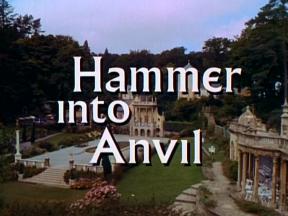 Hammer Into Anvil
Hammer Into AnvilTransmission Date: 1/12/1967
Episode Length: 48'27m (DVD timing)/50'21m (Blu-Ray timing)
Est. Ratings: 9.1m
Written by: Roger Woddis
Directed by: Pat Jackson
DVD availability: Try amazon.com
Production Commenced:
March 1967
Production Credits:
An ITC Production by Everyman Films Ltd. Executive Producer: Patrick McGoohan; Script Editor: George Markstein; Producer: David Tomblin; Production Manager: Bernard Williams; Director of Photography: Brendan J. Stafford B.S.C.; Art Director: Jack Shampan; Camera Operator: Jack Lowin; Editor: Lee Doig; Theme: Ron Grainer; Musical Director: Albert Elms; Cameraman (2nd Unit): Robert Monks; Assistant Director: Gino Marotta; Sound Editor: Ken Rolls; Sound Recordist: John Bramall; Music Editor: Eric Mival; Casting Director: Rose Tobias-Shaw; Continuity: Josie Fulford; Set Dresser: Kenneth Bridgeman; Make-Up: Eddie Knight; Hairdressing: Pat McDermot and Wardrobe: Masada Wilmot. Made on location and at Metro-Goldwyn-Mayer Studios, Borehamwood, England.
Starring:
Patrick McGoohan (The Prisoner); Patrick Cargill (Number Two); Victor Maddern (Band Master); Basil Hoskins (Number Fourteen); Norman Scace (Psychiatric Director); Derek Aylward (New Supervisor); Angelo Muscat (The Butler); Hilary Dwyer (Number Seventy Three); Arthur Gross (Control Room Supervisor); Peter Swanwick (Supervisor); Victor Woolf (Shop Assistant); Michael Segal (Laboratory Technician); Margo Andrew (Shop Kiosk Girl); Susan Sheers (Female Code Expert); Jackie Cooper (1st Guardian); Fred Haggerty (2nd Guardian); Eddie Powell (3rd Guardian); George Leach (4th Guardian); Fenella Fielding (Loudspeaker Voice, uncredited) and Robert Rietty (Voice of No.2 in titles, uncredited)
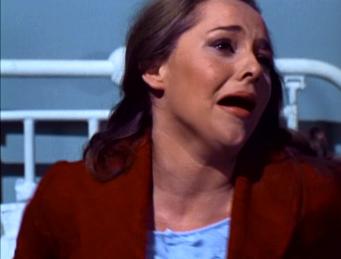
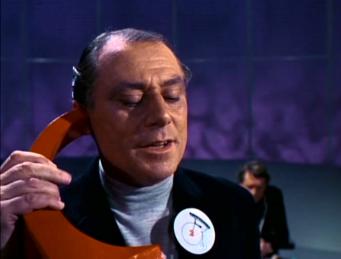
Episode Order:
See the entry on Many Happy Returns for a detailed explanation of why this episode occurs in this particular sequence. In the original UK transmission order, it was screened tenth, just after Checkmate and before It's Your Funeral.
No.6:
The least is learnt about No.6 in this episode, though we do learn he is familiar with Don Quixote, and, more importantly, he has the capacity for revenge when one of his fellow prisoners is killed.
In The Village:
A new No.2 has recently arrived in the Village, declaring on the front of the "Tally Ho" newspaper that he calls for an increased vigilance. Sadistic, he tells an inmate (who has recently slashed her wrists) of her husband's affair. As he advances towards her she leaps from a window and kills herself. We also hear of another inmate, an elderly lady that died "a month ago", No.113.
The Tally Ho costs 2 work units to buy, while a nine-word personal ad in the paper costs 3 work units.
Making its single appearance is a laser cannon in a flag pole which shoots down a pigeon. A Village sport is also seen here for the first time, "Kosho", which features leaping on trampolines and over a water stile. Players are heavily padded, with crash helmets on their heads.
Storyline:
After No.73 is driven to suicide by No.2, No.6 makes efforts to avenge her. Using a series of obscure actions, (including listening to Bizet records, writing out a request from the deceased No.113 and sending the following numbers by carrier pigeon: "20 60 40 47 67 81 91 80". The pigeon is shot down and the code deciphered as "Title message tomorrow, 0800 hours by visual signal". He also sends "pat-a-cake baker's man" by morse code to the horizon. However, what started it all was a blank sheet of paper, which, when scanned, read: "To X.O.4, ref your query the Bizet record. No.2's instability confirmed. Detailed report follows. D.6.") he convinces No.2 that he is a plant assessing his instability.
Escape:
No.2 cracks and reports himself to his masters. No.6 hasn't escaped from the Village, but he has gained his first victory, and avenged No.73's death.
Trivia:
The shopkeeper in this episode is played by a different actor from the one in Arrival and Checkmate. Does this mean that the original shopkeeper was demoted after his attempted escape in Checkmate? Also notable is that this is the only time a prisoner has a number with a "7" in it - the fated No.73.
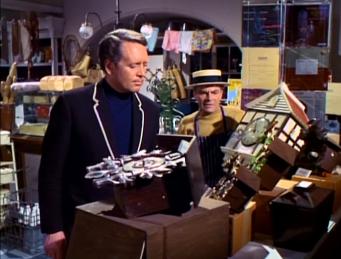
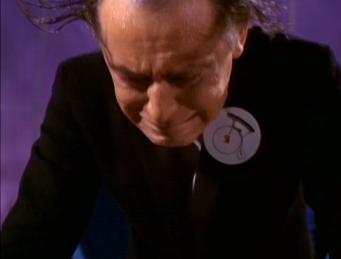
"You shouldn't have interfered, No.6. You'll pay for this."
"No. You will."
Viewpoint:
An inexplicably popular episode featuring an outrageously hammy turn from Patrick Cargill. Rarely has such an over the top performance been witnessed outside of panto, yet there are those who see Cargill�s No.2 as an intense, considered study.
Also an annoyance is the first major use (when watched in this order) of studio backdrops for the Village. There�s still some shooting at Portmerion, but the artificial grass and shops look unforgivably cheap for such an expensive series. Other concerns are the deeply silly �Kosho� game, there to pad out the story, and the repetitive lounge jazz soundtrack. While many of the musical cues in the series are used over and over again throughout most of the episodes, it�s particularly undermining here.
As for the plot, it centres around No.6 playing a series of parlour tricks to make No.2 paranoid. No.6 as avenging hero is a nice idea, and with No.2�s demand for �increased vigilance� and fear of bomb threats it�s oddly topical, but in narrative terms it fails to contain suspense as it's clear what No.6 is up to right from the start. This would be fine if Cargill was delivering a tour-de-force of a man getting steadily broken down, but as he brings us a heel kicking, semi-comic shouter then it�s all a little flat. Ironically, it�s the theme of the episode � the underlying weakness of No.2 � that causes it to fail.

